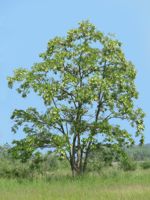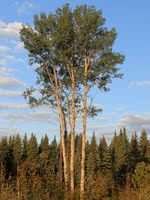Mon-Fri 9am - 5pm Mountain time
Trembling Aspen vs Black Locust
Robinia pseudoacacia
Populus tremuloides
Black Locust is an attractive tree. Its distinctive leaves are made of about a dozen bright green leaflets. It also notable for its fragrant white flowers, which smell of citrus.
Black Locust can grow in many situations, but prefers dry areas with lots of sun. It is robust and is an excellent choice for establishing shade in dry, open areas.
Important note: Much of the Black Locust is toxic to humans and livestock, including seeds, bark, and leaves.
Trembling Aspen is a hardy, fast-growing tree. It is known for its unique "trembling" leaf movement and beautiful bark that whitens with age.
This native shade tree tolerates a range of growing conditions and requires little maintenance.

